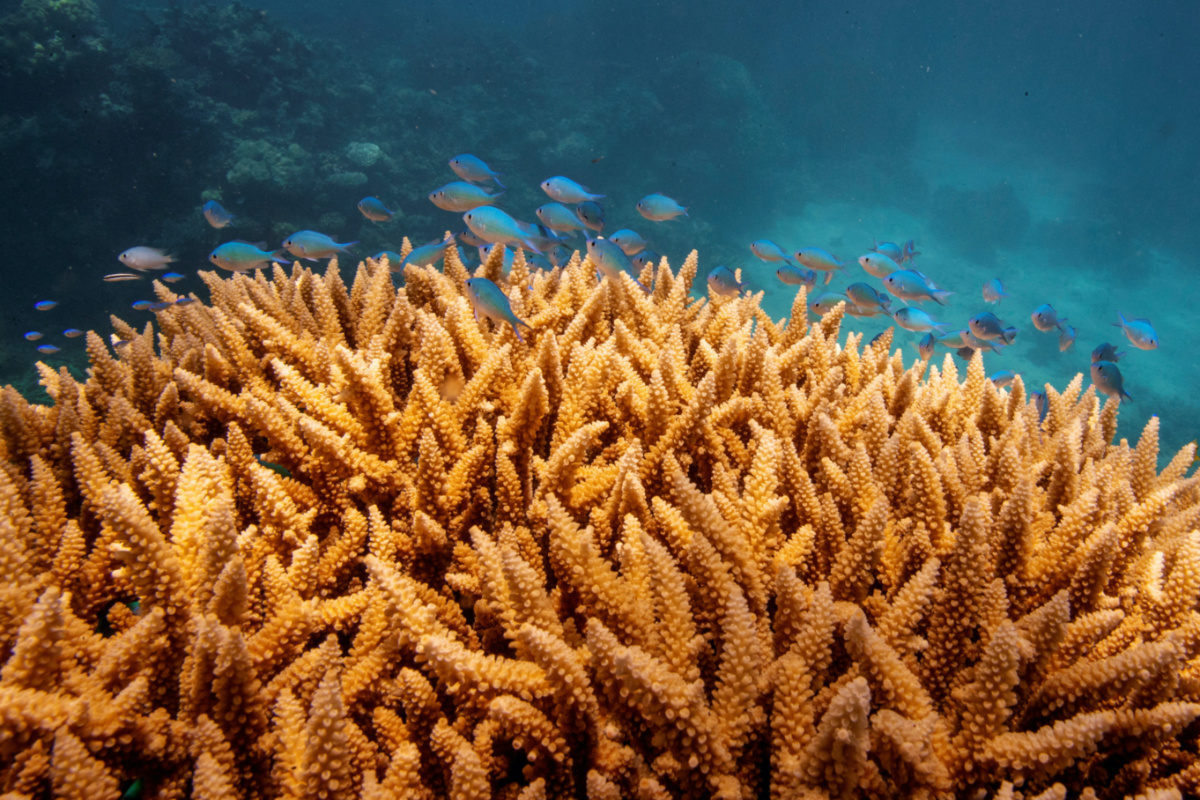Sydney, Australia
Reuters
Australian scientists have come up with a model that will help researchers quickly identify soft corals most vulnerable to bleaching from marine heatwaves, helping prioritise resources to preserve reefs.
Coral bleaching has struck many reefs around the world, including Australia’s Great Barrier Reef, which was hit by four mass bleaching events in the past seven years.

A school of fish swim above a staghorn (Acropora cervicornis) coral colony as it grows on the Great Barrier Reef off the coast of Cairns, Australia, on 25th October, 2019. PICTURE: Reuters/Lucas Jackson
Marine biologist Rosie Steinberg said her research found one type of soft coral was healthier during a heatwave and produced more algal cells than when temperatures were normal.
Hard corals are the primary reef-building corals, while soft corals, which resemble underwater plants or trees, lack a hard outer skeleton. Soft corals are often under-researched as they do not form reefs, though they are present in reef ecosystems.
“If you tried to just protect everything all at once, you’d run out of money in 10 seconds,” Steinberg told Reuters from her lab at the University of New South Wales. “So you need to know specifically, yes these are the species we need to protect, these are the species that are going to be fine no matter what we do.”
Steinberg grinds up wet, frozen samples of soft coral to create a puree, which is put through a centrifuge that separates algal cells from coral protein.
Researchers can then look at the quantity of protein, algal cells and chlorophyll, which are all indicators of coral health.
Soft corals take more time to bleach than hard corals but it would be “catastrophic” when they become affected, said Steinberg, who co-developed the method along with the Sydney Institute of Marine Science, the Ruhr-University Bochum and Macquarie University.
Waters off Australia’s northeast coast face more frequent and severe marine heatwaves, environmental group Climate Council said this year, after sea surface temperatures there rose to around two to four degrees Celsius above average.





